Hardening of the arteries prevention. Atherosclerosis: Causes, Symptoms, and Prevention of Arterial Hardening
How does atherosclerosis develop. What are the main symptoms of arterial hardening. Can atherosclerosis be prevented through lifestyle changes. What diagnostic tests are used to detect atherosclerosis. How is hardening of the arteries treated.
Understanding Atherosclerosis: The Silent Threat to Cardiovascular Health
Atherosclerosis, often referred to as hardening of the arteries, is a condition that develops gradually over time as plaque builds up inside the arteries. This accumulation of fats, cholesterol, and calcium can lead to serious health complications if left untreated. As a form of arteriosclerosis, atherosclerosis specifically involves the formation of atheromas, or fatty plaques, within the arterial walls.
Why is atherosclerosis considered a silent threat? The condition often progresses without noticeable symptoms until a significant blockage occurs or a piece of plaque ruptures, potentially leading to a heart attack or stroke. Understanding the causes, symptoms, and prevention strategies for atherosclerosis is crucial for maintaining cardiovascular health.

The Root Causes of Arterial Hardening: From Lifestyle to Genetics
Atherosclerosis doesn’t have a single cause but rather results from a combination of factors. Some of these factors are within our control, while others are not. Here are the primary contributors to the development of atherosclerosis:
- High cholesterol levels
- Unhealthy diet
- Lack of physical activity
- Smoking
- High blood pressure
- Obesity
- Diabetes
- Family history and genetic predisposition
- Advanced age
How does high cholesterol contribute to atherosclerosis? When there’s an excess of cholesterol in the bloodstream, particularly low-density lipoprotein (LDL) or “bad” cholesterol, it can accumulate within the arterial walls. This accumulation triggers an inflammatory response, leading to the formation of plaque.
Is diet a significant factor in the development of atherosclerosis? Absolutely. A diet high in saturated fats, trans fats, and cholesterol can increase the risk of plaque buildup. The American Heart Association recommends a diet rich in fruits, vegetables, whole grains, lean proteins, and healthy fats to support cardiovascular health.

Recognizing the Symptoms: When Atherosclerosis Makes Itself Known
While atherosclerosis often develops silently, there are symptoms that may indicate the presence of significant arterial blockage. These symptoms can vary depending on which arteries are affected:
- Chest pain or angina (coronary arteries)
- Leg pain or cramping, especially when walking (peripheral arteries)
- Shortness of breath (coronary arteries)
- Fatigue
- Confusion or difficulty with cognitive functions (carotid arteries)
- Weakness or numbness on one side of the body (carotid arteries)
- High blood pressure (renal arteries)
When do symptoms of atherosclerosis typically appear? Unfortunately, symptoms often don’t manifest until the arteries have narrowed significantly, usually by 70% or more. This underscores the importance of regular check-ups and preventive measures, even in the absence of symptoms.
Warning Signs of Heart Attack and Stroke
Atherosclerosis can lead to life-threatening events such as heart attacks and strokes. Recognizing the symptoms of these conditions is crucial for seeking immediate medical attention:

Heart attack symptoms:
- Chest pain or discomfort
- Pain radiating to the arms, back, neck, or jaw
- Shortness of breath
- Nausea or vomiting
- Cold sweats
- Lightheadedness
Stroke symptoms:
- Sudden weakness or numbness, especially on one side of the body
- Confusion or difficulty speaking
- Severe headache
- Vision problems
- Loss of balance or coordination
Diagnosing Atherosclerosis: From Physical Exams to Advanced Imaging
Detecting atherosclerosis before it leads to serious complications is crucial. Healthcare providers use a combination of physical examinations and diagnostic tests to assess the presence and severity of arterial hardening.
Physical Examination
During a physical exam, a doctor may check for signs of atherosclerosis by:
- Listening for abnormal sounds in the arteries (bruits)
- Checking for weak or absent pulses
- Looking for signs of poor wound healing
- Measuring blood pressure in various parts of the body
Diagnostic Tests
What tests are used to diagnose atherosclerosis? Depending on the suspected location and severity of the condition, doctors may order one or more of the following:

- Blood tests: To check cholesterol levels, blood sugar, and other markers of cardiovascular health
- Electrocardiogram (ECG): To assess heart function and detect irregularities
- Stress tests: To evaluate heart performance during physical activity
- Ankle-brachial index: To check for peripheral artery disease
- Ultrasound: To visualize blood flow and arterial wall thickness
- Computed tomography (CT) scan: To detect calcium deposits in the arteries
- Magnetic resonance angiography (MRA): To provide detailed images of the arteries
- Angiogram: An invasive procedure that uses contrast dye to visualize blood flow through the arteries
How accurate are these diagnostic tests? While no single test is perfect, combining multiple diagnostic methods can provide a comprehensive picture of arterial health. Advanced imaging techniques like CT and MRA offer high sensitivity in detecting even small areas of plaque buildup.
Prevention Strategies: Lifestyle Changes for Healthier Arteries
Can atherosclerosis be prevented? While some risk factors like age and genetics cannot be changed, many aspects of atherosclerosis prevention are within our control. Adopting a heart-healthy lifestyle can significantly reduce the risk of developing this condition.

Diet and Nutrition
What dietary changes can help prevent atherosclerosis?
- Increase consumption of fruits, vegetables, and whole grains
- Choose lean proteins like fish, poultry, and legumes
- Limit intake of saturated and trans fats
- Reduce sodium consumption to less than 2,300 mg per day
- Avoid added sugars and processed foods
- Incorporate heart-healthy fats like olive oil, avocados, and nuts
Physical Activity
How much exercise is needed to reduce the risk of atherosclerosis? The American Heart Association recommends at least 150 minutes of moderate-intensity aerobic activity or 75 minutes of vigorous-intensity aerobic activity per week. Regular exercise helps maintain a healthy weight, reduces blood pressure, and improves cholesterol levels.
Smoking Cessation
Quitting smoking is one of the most impactful steps in preventing atherosclerosis. Tobacco use damages blood vessels, increases inflammation, and raises the risk of plaque formation. Support programs and nicotine replacement therapies can aid in smoking cessation efforts.
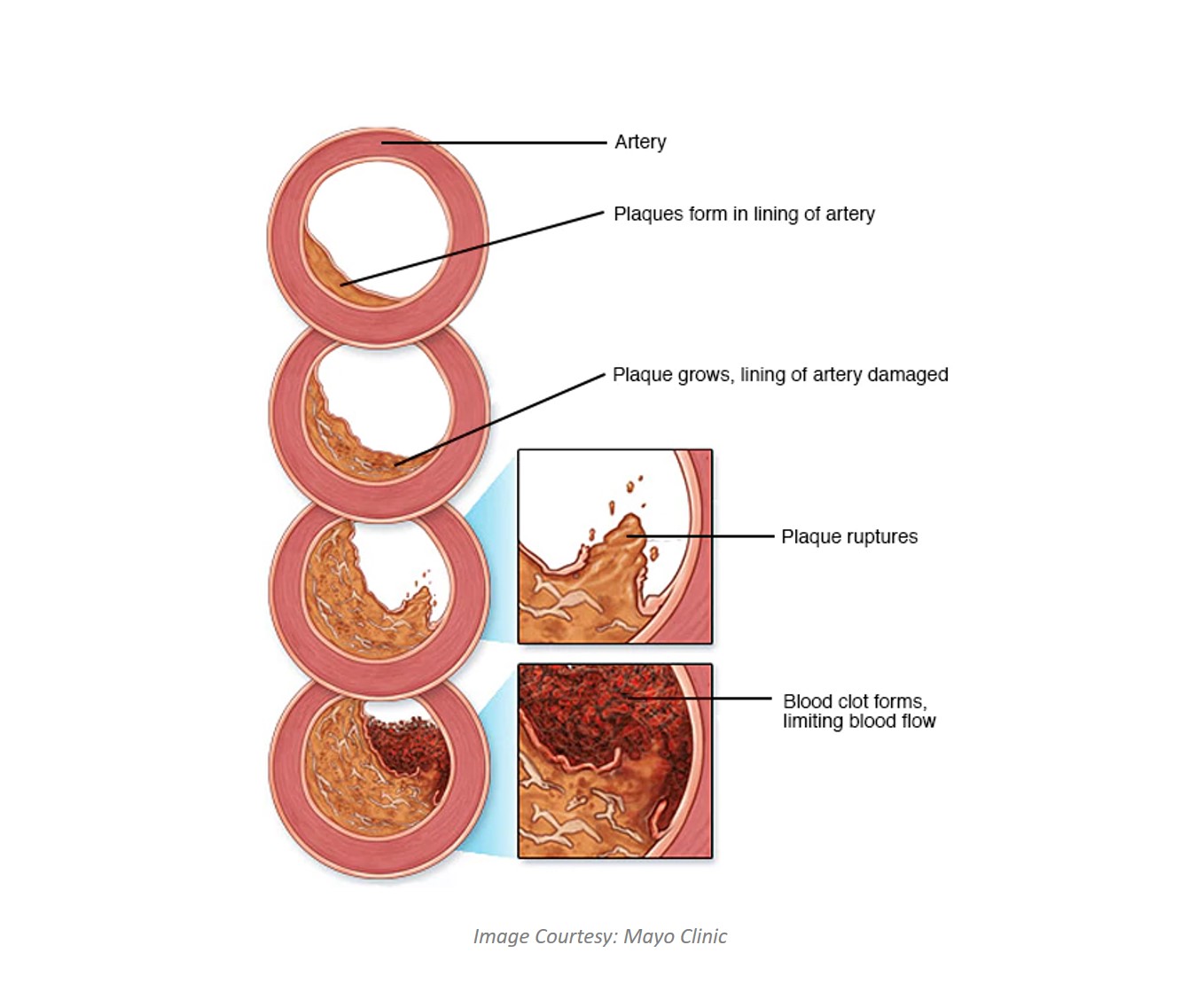
Stress Management
Chronic stress can contribute to the development of atherosclerosis by increasing inflammation and blood pressure. Incorporating stress-reduction techniques such as meditation, yoga, or deep breathing exercises can support overall cardiovascular health.
Treatment Options: Managing and Reversing Arterial Hardening
When lifestyle changes alone are not sufficient to manage atherosclerosis, medical interventions may be necessary. Treatment aims to slow the progression of the disease, reduce symptoms, and prevent complications.
Medications
What medications are used to treat atherosclerosis?
- Statins: To lower cholesterol levels
- Antiplatelet medications: To prevent blood clots
- Beta-blockers: To reduce heart rate and blood pressure
- ACE inhibitors: To lower blood pressure and reduce strain on the heart
- Calcium channel blockers: To improve blood flow and lower blood pressure
Surgical Procedures
In cases of severe arterial blockage, surgical interventions may be necessary:

- Angioplasty and stenting: A minimally invasive procedure to open blocked arteries
- Atherectomy: Removal of plaque from the arteries
- Bypass surgery: Creating a new route for blood flow around a blocked artery
- Endarterectomy: Surgical removal of plaque from the arteries
Can atherosclerosis be reversed? While complete reversal may not always be possible, early intervention through lifestyle changes and medical treatment can significantly slow or even halt the progression of the disease. In some cases, particularly with aggressive lipid-lowering therapy, partial regression of plaque buildup has been observed.
Living with Atherosclerosis: Long-term Management and Quality of Life
For individuals diagnosed with atherosclerosis, long-term management is crucial for maintaining quality of life and preventing complications. This often involves a combination of ongoing medical care and lifestyle adjustments.
Regular Monitoring
Frequent check-ups and diagnostic tests help track the progression of the disease and the effectiveness of treatment. This may include:

- Regular blood tests to monitor cholesterol levels
- Periodic imaging studies to assess plaque buildup
- Blood pressure measurements
- Evaluation of symptoms and overall cardiovascular health
Medication Adherence
Consistently taking prescribed medications is essential for managing atherosclerosis. Patients should communicate with their healthcare providers about any side effects or concerns regarding their medication regimen.
Lifestyle Maintenance
Continuing to prioritize a heart-healthy lifestyle is crucial even after diagnosis. This includes:
- Maintaining a balanced diet
- Engaging in regular physical activity
- Managing stress effectively
- Avoiding tobacco use
- Limiting alcohol consumption
Emotional and Psychological Support
Living with a chronic condition like atherosclerosis can be emotionally challenging. Support groups, counseling, and mental health resources can provide valuable assistance in coping with the psychological aspects of the disease.
How does atherosclerosis impact daily life? While the condition may require some lifestyle adjustments, many individuals with atherosclerosis lead full and active lives. By working closely with healthcare providers and adhering to treatment plans, patients can effectively manage their condition and reduce the risk of complications.

The Future of Atherosclerosis Treatment: Emerging Therapies and Research
As our understanding of atherosclerosis continues to evolve, new treatment approaches are being developed to target the disease more effectively. Ongoing research focuses on novel therapies that could revolutionize the management of arterial hardening.
Targeted Therapies
What new treatments are being developed for atherosclerosis?
- PCSK9 inhibitors: A new class of drugs that dramatically lower LDL cholesterol levels
- Anti-inflammatory medications: Targeting the inflammatory component of atherosclerosis
- Gene therapy: Aiming to correct genetic factors contributing to the disease
- Nanotechnology: Developing targeted drug delivery systems for more effective treatment
Regenerative Medicine
Stem cell research and tissue engineering hold promise for repairing damaged arterial walls and promoting the growth of healthy blood vessels. While still in early stages, these approaches could potentially offer new ways to reverse the effects of atherosclerosis.

Personalized Medicine
Advances in genetic testing and biomarker identification are paving the way for more personalized treatment approaches. By tailoring therapies to an individual’s specific genetic profile and risk factors, healthcare providers may be able to prevent or manage atherosclerosis more effectively.
What challenges remain in atherosclerosis research? While significant progress has been made, researchers continue to work on developing treatments with fewer side effects, improving early detection methods, and finding ways to more effectively reverse arterial damage.
As research progresses, the future of atherosclerosis treatment looks promising. However, prevention remains a key focus, emphasizing the importance of adopting heart-healthy habits early in life to reduce the risk of developing this common but serious condition.
Symptoms, Causes, Diagnosis, and Treatment
Atherosclerosis is a narrowing of the arteries caused by a buildup of plaque. Arteries are the blood vessels that carry oxygen and nutrients from your heart to the rest of your body.
As you get older, fats, cholesterol, and calcium can collect in your arteries and form plaque. The buildup of plaque makes it difficult for blood to flow through your arteries. This buildup may occur in any artery in your body, including around your heart, legs, brain, and kidneys.
It can result in a shortage of blood and oxygen in various tissues of your body. Pieces of plaque can also break off, causing a blood clot. Without treatment, atherosclerosis can lead to heart attack, stroke, or heart failure, among other conditions.
Atherosclerosis is a fairly common problem associated with aging. This condition can be prevented and many successful treatment options exist.
Did you know?
Atherosclerosis is a form of arteriosclerosis, otherwise known as hardening of the arteries.
The terms “atherosclerosis” and “arteriosclerosis” are sometimes used interchangeably, but they represent slightly different conditions.
Most symptoms of atherosclerosis don’t show up until a blockage occurs. Common symptoms include:
- chest pain or angina
- pain in your leg, arm, and anywhere else that has a blocked artery
- cramping in the buttocks while walking
- shortness of breath
- fatigue
- confusion, which occurs if the blockage affects circulation to your brain
- loss of motor or sensory function on one side of the body, which occurs if the blockage affects circulation to your brain
- muscle weakness in your legs from lack of circulation
It’s also important to know the symptoms of heart attack and stroke. Both of these can be caused by atherosclerosis and require immediate medical attention.
The symptoms of a heart attack include:
- chest pain or discomfort
- pain in the shoulders, back, neck, arms, and jaw
- abdominal pain
- shortness of breath
- sweating
- lightheadedness
- nausea or vomiting
- a sense of impending doom
The symptoms of stroke include:
- weakness or numbness in the face or limbs
- trouble speaking
- trouble understanding speech
- vision problems
- loss of balance
- sudden, severe headache
Heart attack and stroke are both medical emergencies. Call 911 or your local emergency services and get to a hospital’s emergency room as soon as possible if you experience symptoms of a heart attack or stroke.
Call 911 or your local emergency services and get to a hospital’s emergency room as soon as possible if you experience symptoms of a heart attack or stroke.
When plaque builds up and the arteries become hard and inflamed, blood has trouble flowing through them to the rest of the body. This prevents your organs and tissues from getting the oxygenated blood they need to function.
The following are common causes of hardening of the arteries:
High cholesterol
Cholesterol is a waxy, yellow substance that’s found naturally in the body as well as in certain foods you eat.
If the levels of cholesterol in your blood are too high, it can clog your arteries. It becomes a hard plaque that restricts or blocks blood circulation to your heart and other organs.
Diet
It’s important to eat a healthy diet. The American Heart Association (AHA) recommends that you follow an overall healthy dietary pattern that stresses:
- a wide range of fruits and vegetables
- whole grains
- low fat dairy products
- poultry and fish, without skin
- nuts and legumes
- non-tropical vegetable oils, such as olive or sunflower oil
Some other diet tips:
- Avoid foods and drinks with added sugar, such as sugar-sweetened beverages, candy, and desserts.
 The AHA recommends no more than 6 teaspoons or 100 calories of sugar per day for most women, and no more than 9 teaspoons or 150 calories per day for most men.
The AHA recommends no more than 6 teaspoons or 100 calories of sugar per day for most women, and no more than 9 teaspoons or 150 calories per day for most men. - Avoid foods high in salt. Aim to have no more than 2,300 milligrams of sodium per day. Ideally, you’d consume no more than 1,500 milligrams a day.
- Avoid foods high in unhealthy fats, such as trans fats. Replace them with unsaturated fats, which are better for you. If you need to lower your blood cholesterol, reduce saturated fat to no more than 5 to 6 percent of total calories. For someone eating 2,000 calories a day, that’s about 13 grams of saturated fat.
Aging
As you age, your heart and blood vessels work harder to pump and receive blood. Your arteries may stiffen and become less elastic, making them more susceptible to plaque buildup.
Your doctor will perform a physical exam if you have symptoms of atherosclerosis. They’ll check for:
- a weakened pulse
- an aneurysm, or an abnormal bulging or widening of an artery due to weakness of the arterial wall
- slow wound healing, which indicates a restricted blood flow
- a bruit, or whooshing sound the blood makes as it travels through the blocked artery
A cardiologist may listen to your heart to see if you have any atypical sounds. Your doctor will order more tests if they think you may have atherosclerosis.
Your doctor will order more tests if they think you may have atherosclerosis.
Tests can include:
- a blood test to check your cholesterol levels
- a Doppler ultrasound, which uses sound waves to create a picture of the artery that shows if there’s a blockage
- an ankle-brachial index, which looks for a blockage in your arms or legs by comparing the blood pressure in each limb
- a magnetic resonance angiography or a computed tomography angiography, which create pictures of the large arteries in your body
- a cardiac angiogram, which is a type of chest X-ray that’s taken after your heart arteries are injected with radioactive dye
- an electrocardiogram (ECG or EKG), which measures the electrical activity in your heart to look for any areas of decreased blood flow
- a stress test, or exercise tolerance test, which monitors your heart rate and blood pressure while you exercise on a treadmill or stationary bicycle
Treatment involves changing your current lifestyle to decrease the amount of fat and cholesterol you consume. You can exercise more to improve the health of your heart and blood vessels.
You can exercise more to improve the health of your heart and blood vessels.
Your doctor may recommend lifestyle changes as the first line of treatment. You may also need additional medical treatments, such as medications or surgery.
Medications
Medications can help prevent atherosclerosis from worsening.
Medications for treating atherosclerosis include:
- cholesterol-lowering drugs, including statins
- angiotensin-converting enzyme (ACE) inhibitors, which may lower blood pressure
- beta-blockers, which “rest” the heart
- antiplatelet drugs such as aspirin to prevent blood from clotting and clogging your arteries
Aspirin can be particularly effective for people with a history of atherosclerotic cardiovascular disease, including heart attack and stroke. An aspirin regimen discussed with your doctor may potentially lower your risk of having another health event if you already have atherosclerosis.
The U.S. Preventive Services Task Force recently released updated guidelines on using aspirin for the prevention of cardiovascular disease. These guidelines may be relevant in discussions with your doctor.
These guidelines may be relevant in discussions with your doctor.
If you have no history of atherosclerotic cardiovascular disease, only use aspirin as a preventive medication if your risk of bleeding is low and your risk of atherosclerotic cardiovascular disease is high. Always discuss an aspirin regimen with your doctor first.
Surgery
If symptoms are especially severe or if muscle or skin tissue are endangered, surgery may be necessary.
Possible surgeries for treating atherosclerosis include:
- bypass surgery, which involves using a vessel from somewhere else in your body or a synthetic tube to divert blood around your blocked or narrowed artery
- thrombolytic therapy, which involves dissolving a blood clot by injecting a drug into your affected artery
- angioplasty and percutaneous coronary intervention, which involves using a catheter and a balloon to expand your artery, sometimes inserting a stent to keep the artery open
- atherectomy, which involves removing plaque from your arteries by using a catheter with a sharp blade at one end
- endarterectomy, which involves surgically removing fatty deposits from your artery
Many factors place you at risk for atherosclerosis.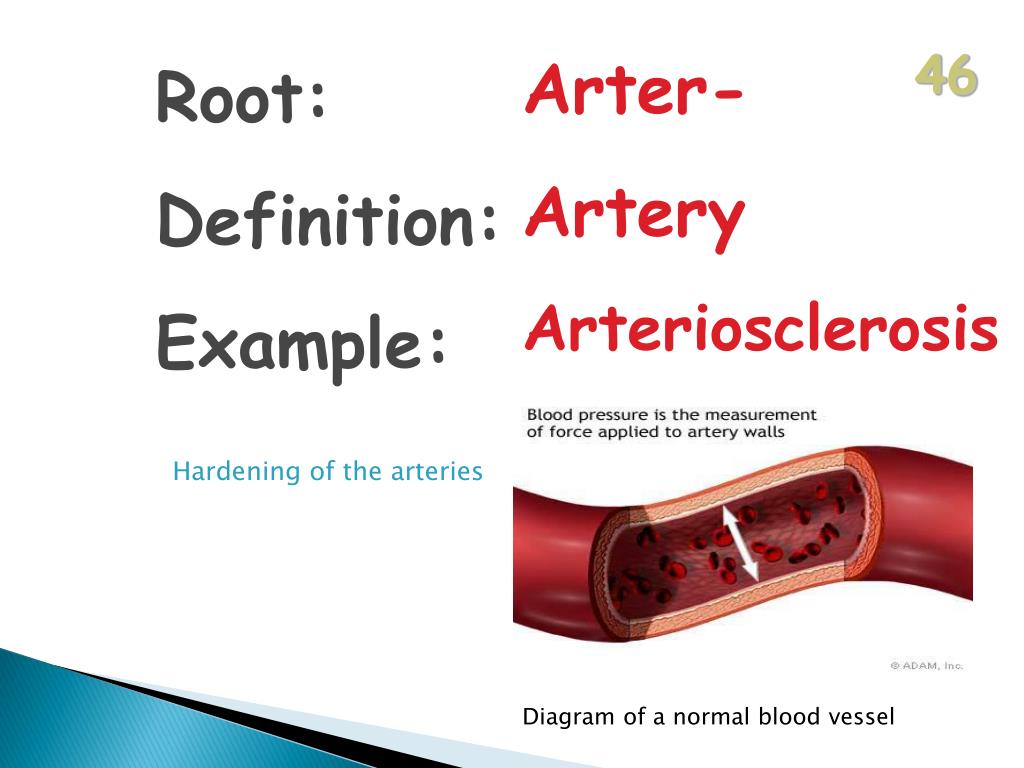 Some risk factors can be modified, while others can’t.
Some risk factors can be modified, while others can’t.
Family history
If atherosclerosis runs in your family, you may be at risk for hardening of the arteries. You can inherit this condition, as well as other heart-related problems.
Lack of exercise
Regular exercise is good for your heart. It keeps your heart muscle strong and encourages oxygen and blood flow throughout your body.
Lack of exercise increases your risk for a host of medical conditions, including heart disease.
High blood pressure
High blood pressure can damage your blood vessels by making them weak in some areas. Cholesterol and other substances in your blood may lower the flexibility of your arteries over time.
Smoking
Smoking tobacco products can damage your blood vessels and heart.
Diabetes
People with diabetes have a much higher incidence of coronary artery disease.
Atherosclerosis can cause:
- heart failure
- heart attack
- abnormal heart rhythm
- stroke
It also results in the following diseases:
Coronary artery disease (CAD)
The coronary arteries are blood vessels that provide your heart’s muscle tissue with oxygen and blood.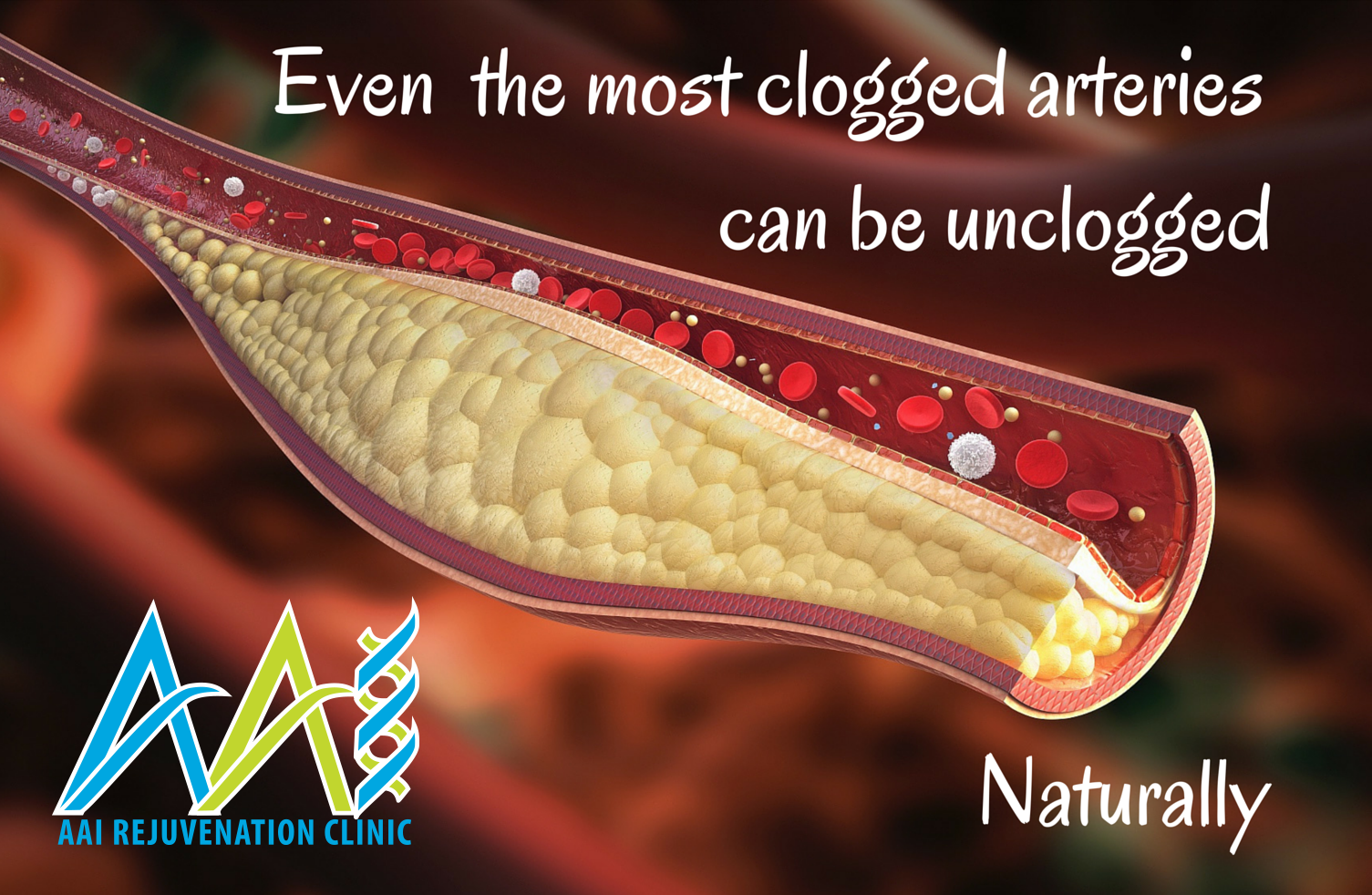 CAD occurs when the coronary arteries become hard.
CAD occurs when the coronary arteries become hard.
Carotid artery disease
The carotid arteries are found in your neck and supply blood to your brain.
These arteries may be compromised if plaque builds up in their walls. The lack of circulation may reduce how much blood and oxygen reaches your brain’s tissue and cells.
Peripheral artery disease
Your legs, arms, and lower body depend on your arteries to supply blood and oxygen to their tissues. Hardened arteries can cause circulation problems in these areas of the body.
Kidney disease
The renal arteries supply blood to your kidneys. Kidneys filter waste products and extra water from your blood.
Atherosclerosis of these arteries may lead to kidney failure.
Lifestyle changes can help to prevent as well as treat atherosclerosis, especially for people with type 2 diabetes.
Helpful lifestyle changes include:
- eating a healthy diet that’s low in saturated fats and cholesterol
- avoiding fatty foods
- adding fish to your diet twice per week instead of red meat
- getting at least 75 minutes of vigorous exercise or 150 minutes of moderate exercise each week
- quitting smoking if you’re a smoker
- maintaining a moderate and healthy-for-you weight
- managing stress
- treating conditions associated with atherosclerosis, such as hypertension, high cholesterol, sleep apnea, obesity, and diabetes
You may see improvement in your health with treatment, but this may take time. The success of your treatment will depend on:
The success of your treatment will depend on:
- the severity of your condition
- how promptly it was treated
- whether other organs were affected
Hardening of the arteries can’t be reversed. However, treating the underlying cause and making healthy lifestyle and dietary changes can help slow down the process or prevent it from getting worse.
Work closely with your doctor to make the appropriate lifestyle changes. They’ll help you find the proper medications to control your condition and avoid complications.
Atherosclerosis: Prevention Through the Ages
No matter your age, try these steps to prevent hardening of the arteries.
Written by Matthew Hoffman, MD
- Preventing Atherosclerosis: In Your 20s and 30s
- Preventing Atherosclerosis: In Your 40s and 50s
- Preventing Atherosclerosis: In Your 60s and Up
- Preventing Atherosclerosis: Suitable for All Ages
Atherosclerosis starts early and progresses throughout life.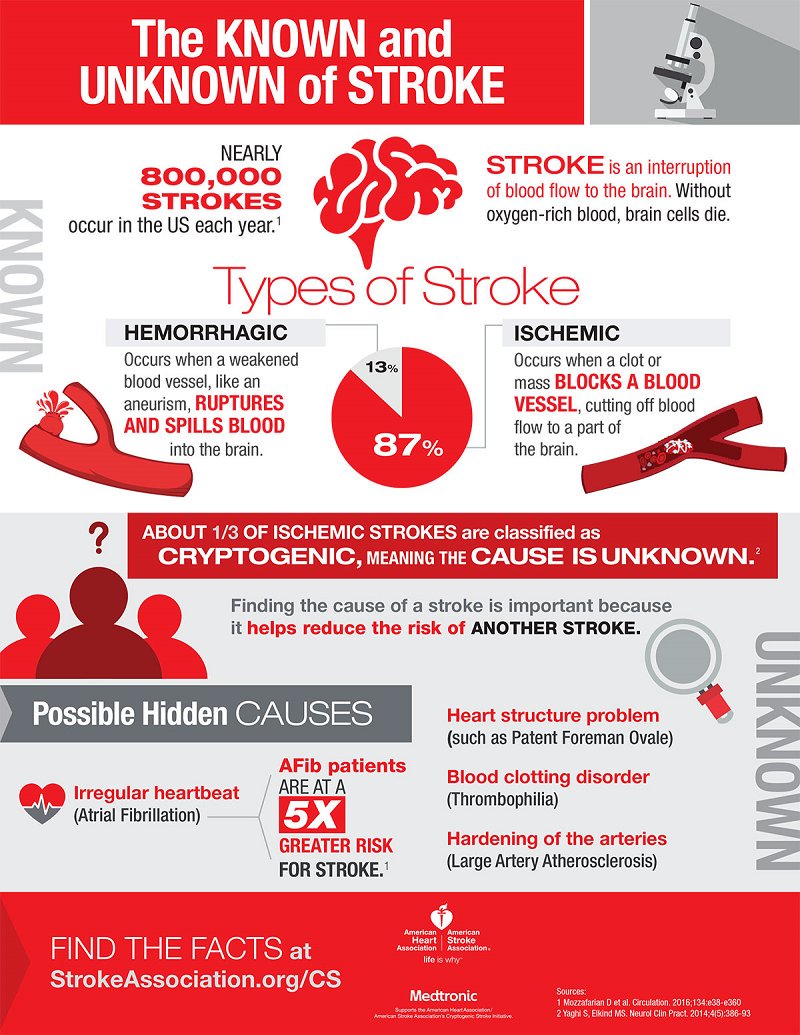 You can’t see or feel it, but in most of us the process is already under way.
You can’t see or feel it, but in most of us the process is already under way.
The plaques of atherosclerosis can grow to become blood vessel blockages. If a plaque ruptures, the sudden blood clot causes a heart attack or stroke.
Atherosclerosis is common, unpredictable, and potentially deadly. Is there any good news? Because atherosclerosis takes decades to progress, the process can be slowed down at any point, reducing the risk.
Regardless of your age, there are specific steps you can take to slow down atherosclerosis. Take a moment to consider what changes you can make today, to protect your arteries later.
Almost no one develops complications from atherosclerosis at this age. Still, studies show the process has begun by our 20s or even younger. In these studies, risk factors mattered: young people with obesity, high blood pressure, high cholesterol, or who smoked had more-advanced early atherosclerosis.
The American Heart Association recommends seeing your doctor beginning at age 20 to routinely assess your risk for heart disease.
Instead of treating atherosclerosis, the key here is developing good habits that will last a lifetime. Don’t force it; instead, try to imagine how better habits might fit into your life.
Exercise: Make it a hobby to find some physical activity you enjoy. The idea of sticking to a boring, unpleasant exercise schedule for the next 40 years would send anyone to the couch. Experiment with different activities until you find something you like. If you get sick of that, try something else.
Diet: Eating five servings of fruits and vegetables daily is effective at preventing heart disease. Make it a habit to try something different in the produce aisle each time you hit the supermarket.
The rate of developing atherosclerosis accelerates in middle age, and so should your approach to reducing the risk.
Risk factors (high blood pressure or cholesterol, diabetes, obesity, and smoking) become extremely important through these years. Everyone should see a doctor sometime soon after turning 40.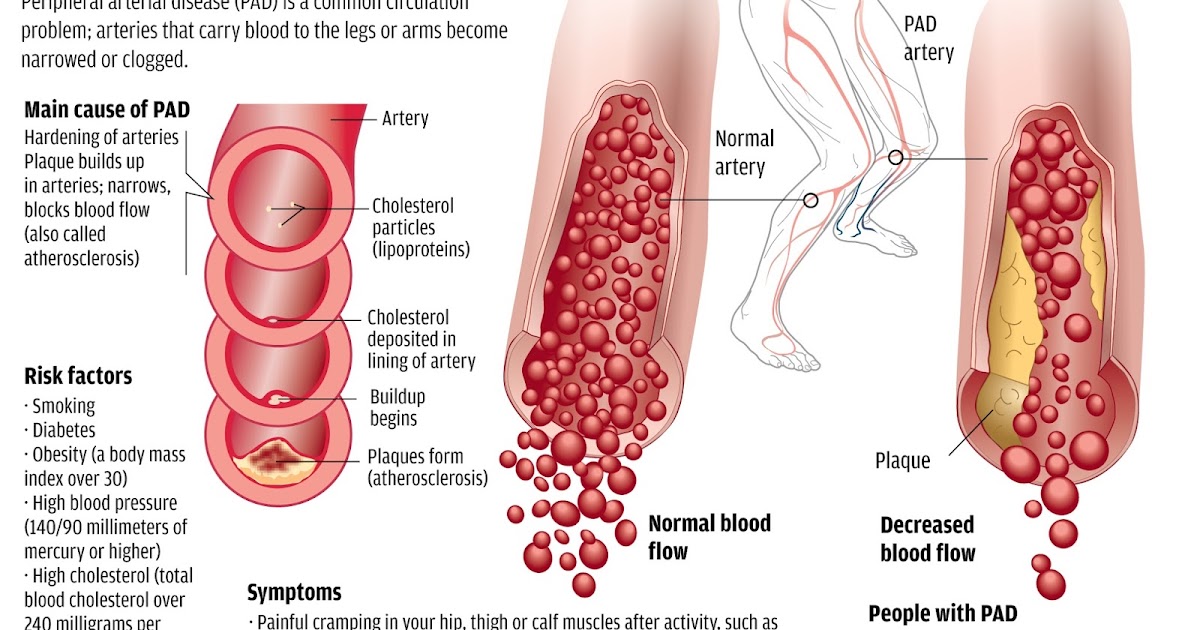 He or she can assess your risk factors and provide a treatment plan.
He or she can assess your risk factors and provide a treatment plan.
Exercise: If you’ve been sedentary most of your life, you don’t need to run marathons to get a benefit. Any activity is better than none.
- Start slow and work up to 30 minutes of walking daily.
- Take the stairs. Walk up one flight, or down two.
- At the grocery store, park the car at the far end of the lot and walk.
- Take an extra lap around the mall before heading home.
Diet: Ask each member of your family to choose a favorite (or least-hated) vegetable. Rotate through everyone’s favorite at dinnertime. Toss in a salad, and you’re well on your way to reducing your atherosclerosis risk.
Cut back on the red meat, as well. Keep meat portions small (the size of a deck of cards). Lean, skinless poultry is a great choice.
Don’t use the excuse, “at my age, changing my lifestyle won’t make any difference.” In fact, adopting a healthy lifestyle in middle age reduces the risk of death from atherosclerosis by two-thirds
The near- and post-retirement years should be a time to enjoy oneself. But it’s also a time to think about health risks. The No. 1 threat by far, for both men and women, is atherosclerosis.
But it’s also a time to think about health risks. The No. 1 threat by far, for both men and women, is atherosclerosis.
The rates of atherosclerosis complications skyrocket after age 65. For example, 85% of deaths from atherosclerosis occur in this age group. But you can reduce this risk dramatically by making changes to your routine.
Risk factors: A large number of people in this age group will need medicines to treat high blood pressure and cholesterol. These medicines make a profound difference, reducing the risk of atherosclerosis dramatically.
Despite the known benefits, studies show that many people stop taking cholesterol medicines after several months, increasing their risk unnecessarily. Don’t be one of them. Discuss any concerns with your doctor, and stick with your treatment plan.
Exercise: Exercise has a stronger beneficial effect in older age than ever before. Find an exercise buddy, roust your spouse off the couch, or start a neighborhood walking club, but get moving!
Atherosclerosis starts early and progresses throughout life.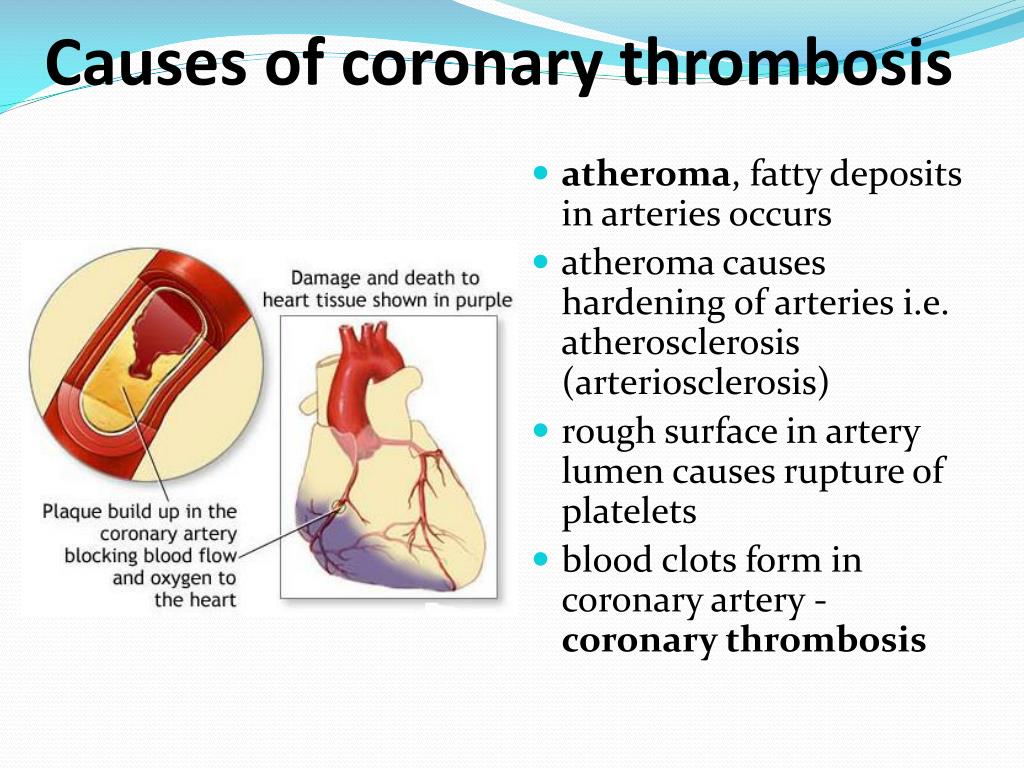 You can’t see or feel it, but in most of us the process is already under way.
You can’t see or feel it, but in most of us the process is already under way.
The plaques of atherosclerosis can grow to become blood vessel blockages. If a plaque ruptures, the sudden blood clot causes a heart attack or stroke.
Atherosclerosis is common, unpredictable, and potentially deadly. Is there any good news? Because atherosclerosis takes decades to progress, the process can be slowed down at any point, reducing the risk.
Regardless of your age, there are specific steps you can take to slow down atherosclerosis. Take a moment to consider what changes you can make today, to protect your arteries later.
And the single best way to reduce your risk of atherosclerosis, at any age: don’t smoke! If you do smoke, see your doctor: New treatments are available that make it easier to quit.
Top Picks
Stroke prevention carotid repair
- Main
- Treatment
- Stroke prevention
Content:
Causes and symptoms of stenosing atherosclerosis of ACA
Stenting or carotid endarterectomy
Operation steps
Our center uses the most modern techniques for the treatment of atherosclerotic lesions of the brachiocephalic arteries.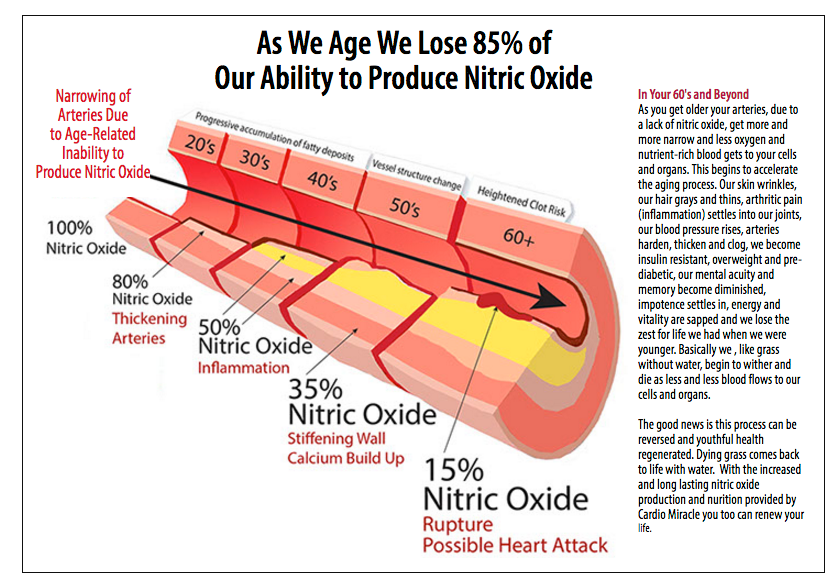
Causes and symptoms of stenosing atherosclerosis of the BCA
The two common carotid arteries transport oxygenated blood to the brain. These vessels rise along the neck, where each is divided into 2 branches – the external carotid (provides blood to the outer part of the head, face and a larger segment of the neck) and the internal carotid (supplies blood to the inside of the skull and orbital region).
Carotid stenosis is a narrowing of the artery caused by atherosclerosis. Due to this disease, accumulations of cholesterol, fats and other substances (inflammatory cells, cellular waste products, calcium and proteins) circulate in the bloodstream. These particles stick to the walls of blood vessels and over time form layers that narrow or block the carotid artery, making it more likely to have a stroke.
Treatment options for this condition have historically included a combination of drugs, lifestyle changes, and an operation known as carotid endarterectomy. During the procedure, surgeons made a small incision in the neck and removed atherosclerotic plaques. However, many patients with stenosis have comorbidities that make them poor candidates for this operation. For these patients, a less invasive approach to the treatment of the disease is offered – stenting.
During the procedure, surgeons made a small incision in the neck and removed atherosclerotic plaques. However, many patients with stenosis have comorbidities that make them poor candidates for this operation. For these patients, a less invasive approach to the treatment of the disease is offered – stenting.
Stenting or carotid endarterectomy
Stenting is a minimally invasive treatment for carotid disease, a relatively new approach that is effective in restoring blood flow through blocked blood vessels.
Carotid endarterectomy has been shown to reduce the incidence of stroke in patients with symptomatic and asymptomatic stenosis. With current advances in endovascular technology, stenting has become a more high-tech option for correcting carotid artery stenosis than carotid endarterectomy, less aggressive and invasive.
The purpose of stenting is to prevent future stroke.
Indications for carotid stenting:
- Symptomatic stenosis over 50%
- Asymptomatic stenosis greater than 70%
- Restenosis after carotid endarterectomy
Preparation for carotid stenting:
- It is important to tell the doctor about any medications the patient is taking and to take them with you.

- Tell your doctor if you have allergies, especially to contrast media, iodine, metals (cobalt, chromium, nickel, titanium, or stainless steel) or plastics (polyurethane).
- If the patient cannot or does not intend to take aspirin or clopidogrel, the specialist must be informed as these drugs are usually taken before the procedure and are mandatory for long-term use after stenting.
- It is important that you follow the instructions given by your doctor.
- Ensure that the risks and benefits of carotid stenting are fully understood.
Carotid angiography
- An invasive X-ray procedure is used to identify narrowing or occlusion in the carotid arteries. The use of carotid angiography helps to identify the risk of a potential stroke. Before the procedure, the doctor prescribes an anti-clotting drug (heparin) to reduce the risk of blood clots.
- Local anesthesia is applied to the area of the body where the introducer is placed.
 A specialist inserts a hollow thin tube into a blood vessel located on the leg or arm. A catheter inserted through a tube is guided to the carotid artery through the aorta under constant x-ray control.
A specialist inserts a hollow thin tube into a blood vessel located on the leg or arm. A catheter inserted through a tube is guided to the carotid artery through the aorta under constant x-ray control. - After the contrast agent is injected through the catheter, images are taken showing its movement through the carotid arteries. Identification of sites of stenosis or blockage of blood vessels is based on the analysis of the content of digital images. Serious narrowing or blockage of the carotid artery is a prerequisite for angioplasty and stenting to restore the lumen of the vessel.
Operational steps
Carotid stenting is usually performed under local anesthesia. General anesthesia is used in exceptional cases. The patient is connected to a machine that monitors blood pressure and heart rate. Before the operation, the patient is injected with an anesthetic into the puncture area, after which an introducer is installed in the artery, through which the instruments are delivered to the affected area. When performing stenting, the surgeon constantly communicates with the patient and carefully monitors his brain activity. A special filter is installed in the artery above the narrowing zone to prevent embolism, in case of a potentially possible detachment of a part of a blood clot or plaque. The next step is the introduction and careful installation of the stent, which is delivered unopened into the artery. At the site of narrowing, the stent design takes on the shape of a vessel, adhering to its walls. Additionally, balloon angioplasty is performed in the area of stenosis. The absence of pain during angioplasty is due to the absence of nerve endings on the inner walls of the vessel. After the stent implantation procedure is completed, the catheter is carefully removed from the patient’s body.
When performing stenting, the surgeon constantly communicates with the patient and carefully monitors his brain activity. A special filter is installed in the artery above the narrowing zone to prevent embolism, in case of a potentially possible detachment of a part of a blood clot or plaque. The next step is the introduction and careful installation of the stent, which is delivered unopened into the artery. At the site of narrowing, the stent design takes on the shape of a vessel, adhering to its walls. Additionally, balloon angioplasty is performed in the area of stenosis. The absence of pain during angioplasty is due to the absence of nerve endings on the inner walls of the vessel. After the stent implantation procedure is completed, the catheter is carefully removed from the patient’s body.
Advantages of the method in the Chekhov Vascular Center:
- No postoperative scar;
- Possibility of performing an operation with a large extent of damaged areas, where access is significantly difficult in an open way;
- Minimal risk of ischemic stroke;
- Shorter recovery time than with open intervention.

Our doctors
Topalyan Karapet Vazgenovich
Head physician
Chernigina Tatyana Petrovna
Head of the Department of X-ray Surgical Methods of Diagnosis and Treatment
Petukhov Alexander Olegovich
Doctor for X-ray endovascular diagnostics and treatment, doctor of ultrasound diagnostics, surgeon
Dokshokov German Ruslanovich
Doctor for X-ray endovascular diagnostics and treatment.
Izzatbek Rakhmatovich Akhmadaliev
Physician for X-ray endovascular diagnostics and treatment, ultrasound diagnostician
Snigirev Oleg Sergeevich
Head of the cardiology department with an intensive care unit
Alexander Stepakhin
Anesthesiologist-resuscitator
Korchagin Dmitry Vasilyevich
Head of the Department of Cardiovascular Surgery
Gasanov Valigulla Magomedovich
Doctor – cardiovascular surgeon, phlebologist, doctor of ultrasound diagnostics
Kiselkina Maria Nikolaevna
Cardiovascular surgeon, ultrasound specialist
Maria Mikhailovna Varenkova
Functional diagnostics doctor
Zakiev Vadim Dmitrievich
Cardiologist
Tolibova Lola Shoabdulkodirovna
Neurologist
Kulikov Alexander Vladimirovich
Doctor – anesthesiologist – resuscitator
Okrugina Svetlana Alekseevna
Doctor – anesthesiologist – resuscitator
Andrey Yaroslavovich Provodnikov
Doctor for X-ray endovascular diagnostics and treatment
Petrov Aleksey Nikolaevich
Anesthesiologist-resuscitator of the highest category
8-800-444-49-59
Appointment for a consultation, examination l. , Russia, 142301
, Russia, 142301
This email address is being protected from spambots. You must have JavaScript enabled to view.
Mon-Sun – 24 hours
Vascular atherosclerosis | Disease
One of the prerequisites for the correct and long-term functioning of our body is good blood circulation. The system of blood vessels permeates literally every part of our body. The uninterrupted supply of blood to our body depends on the patency of these vessels. Ideally, the arteries have elastic walls and are free inside. In the case of narrowing or hardening of the walls of blood vessels, there is a violation of the correct blood flow.
Similar deviations are caused by the accumulation of cholesterol and various other fats mixed with calcium on the inner walls of blood vessels. This vascular disease is called atherosclerosis. Deposits are in the form of plaque or even plaques (blood clots). This leads to a significant narrowing of the lumen of the artery up to clogging. The walls of the vessels themselves become denser and lose their elasticity. In addition, detachments of plaques from the walls of blood vessels with their subsequent transfer by blood flow are also dangerous. Such clots can lead to blockage of individual small vessels, such as a transient ischemic attack (microstroke). The manifestation of such pathologies is a signal of a high probability of a stroke.
The walls of the vessels themselves become denser and lose their elasticity. In addition, detachments of plaques from the walls of blood vessels with their subsequent transfer by blood flow are also dangerous. Such clots can lead to blockage of individual small vessels, such as a transient ischemic attack (microstroke). The manifestation of such pathologies is a signal of a high probability of a stroke.
What causes atherosclerosis of vessels
Observations show that atherosclerosis is much more often observed in people of the older age group, whose lifestyle is associated with nervous overload. Affects hereditary predisposition to the disease, a sedentary, sedentary lifestyle. People suffering from obesity, gout, cholelithiasis, diabetes mellitus are at risk of getting sick. The risk of primary atherosclerosis is noted in people whose diet is dominated by food with an excess amount of animal fats. Smoking also increases the chance of vascular problems.
Atherosclerosis most often manifests itself haphazardly and unevenly, affecting various parts of the human body. In general, we can talk about the following foci of the disease:
- pathology of the vessels of the head;
- pathology of the vessels of the heart;
- pathology of the kidney vessels;
- pathology of the vessels of the extremities.
Atherosclerosis of cerebral vessels is the most common. In this case, lipid deposits affect the vessels of the brain. The narrowing of the vessel gradually leads to the loss of subtle brain functions. Stroke (blockage of the vessel) can be the final stage of the disease.
The next most widespread is atherosclerosis of the vessels of the legs. Symptoms of the disease – the appearance of pain in the calf muscles, reduced pulsation of the arteries, deterioration in the healing of wounds and minor injuries, “chillness” of the legs. Disease of the lower extremities can lead to gangrene of the leg, followed by inevitable amputation.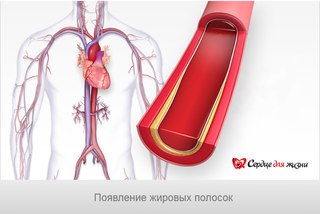
Prevention of the disease
The best way to prevent atherosclerosis is to eliminate the following risk factors, as well as a radical change in lifestyle.
Measures to reduce the risk of disease:
- transition to cholesterol-free food;
- abstinence from smoking;
- regular outdoor walks;
- physical education;
- fight against excess weight.
Elderly people are also advised to use specific blood thinners (eg aspirin).
Diagnosis of atherosclerosis
Atherosclerosis is practically not manifested in the early stages. Of course, regular blood tests can reflect lipid balance and reveal excess cholesterol levels. But this is not enough. To detect the disease, the method of ultrasonic dopplerography of vessels is used. According to the study, it is possible to accurately assess the presence and size of plaques, as well as the size of the residual lumen of the vessel.
The method of coronary angiography stands apart. Already by the name it is clear that the object of study in this case are the coronary vessels (cardiac). The method uses X-rays taken in a special way to find vessel plaques and their sizes.
In addition, blood pressure monitoring tools are widely used, data obtained using computed tomography, ECG and MRI.
Today, there are no drugs that can unambiguously cure vascular atherosclerosis. To suspend, “freeze” the process, the use of so-called statins is effective. These drugs block the production of cholesterol in the liver, significantly reducing the level of atherogenic lipids (substances that lead to the formation of clots, plaques) in the blood. For a radical solution to the problem of narrowing of the arteries, surgical intervention is necessary. Operations allow, in some cases, to remove part of the inner wall of the artery along with plaques and blood clots, in others, forced dilatation (expansion) of the narrowed vessel is carried out using an artificial built-in frame (stent).

 The AHA recommends no more than 6 teaspoons or 100 calories of sugar per day for most women, and no more than 9 teaspoons or 150 calories per day for most men.
The AHA recommends no more than 6 teaspoons or 100 calories of sugar per day for most women, and no more than 9 teaspoons or 150 calories per day for most men.
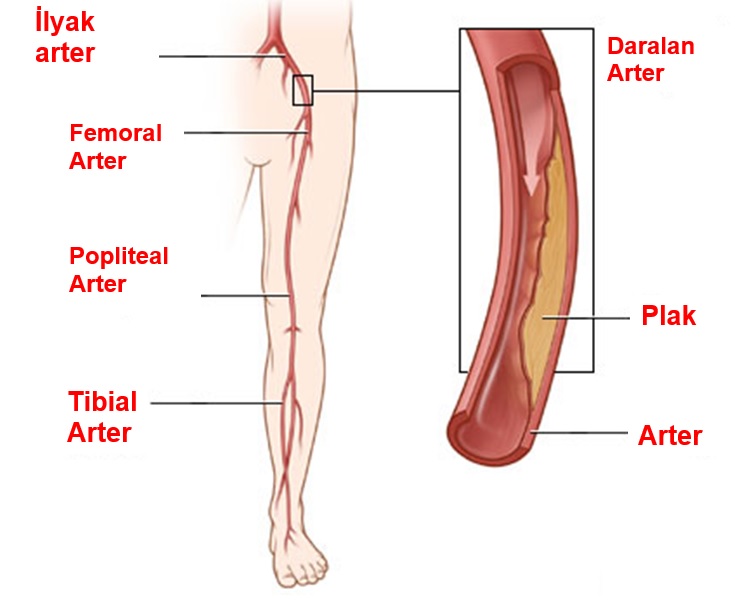 A specialist inserts a hollow thin tube into a blood vessel located on the leg or arm. A catheter inserted through a tube is guided to the carotid artery through the aorta under constant x-ray control.
A specialist inserts a hollow thin tube into a blood vessel located on the leg or arm. A catheter inserted through a tube is guided to the carotid artery through the aorta under constant x-ray control.